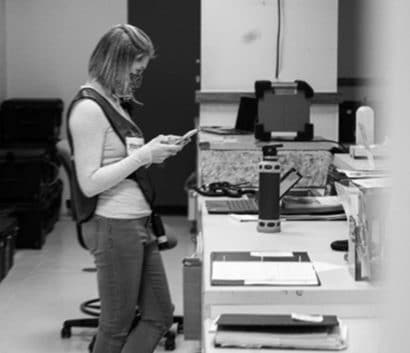Mary Limbert

Mary Limbert, BSPH, CHES ®
Public Health Preparedness Planner, MRC Co-Coordinator
Bucks County Department of Health, Pennsylvania
How did you get involved with PHEP?

I started working for the Pennsylvania health department in 2010 as a health clerk in procurement where I supported the purchasing of supplies for health department programs.
Over the years, I participated in flu drills hosted by the department’s public health preparedness (PHP) program. I met and worked alongside the Bucks County Medical Reserve Corps (BC-MRC). As I became more familiar with different program materials and participated in flu drills, I got a glimpse of public health preparedness.
Wanting to become more involved, I decided to go back to school for my public health degree. While finishing my degree during the COVID-19 pandemic, PHP assigned me to lead the COVID-19 call center resource verification in March 2020 because of my graphic design and social media management experience. My assignment evolved with the response. It later shifted to the logistics lead within our Warwick COVID-19 vaccination clinic. I completed my internship under the guidance of the PHP program. One aspect of my final project was designing a communication management structure and complementary communication reference guide. Because of COVID-19, I was thrown into the response where I was first officially introduced to PHEP.
What attracted you to the public health preparedness field?
While in school, I saw the importance of preventive health care over the more commonly recognized curative health care. It is more practical and cost-effective to plan and practice preventive health care than it is to be treated. For example, it’s easier to always wash your utensils after prepping raw food than it is to get food poisoning. It’s easier to get vaccinated than it is to get ill. This is what attracted me to preparedness—the act of planning for an event before it happens. The better the plans, the more effective the response.
Describe your first day working in public health preparedness. What was your role?
I first started working in public health preparedness in September 2021. Our department focused on COVID-19 vaccinations. I immediately started working on vaccine outreach materials. We worked to create vaccine materials for public awareness and distribution.
What do you do now on a day-to-day basis related to PHEP activities?
My day-to-day consists of co-coordinating our 400+ volunteer BC-MRC unit. I keep records of our volunteers, their training, and other activities up to date. I identify program gaps and develop mechanisms to address them. Also, I develop materials to highlight the achievements of our unit’s volunteers.
When not communicating or creating MRC content, I work with other county departments and engage in other activities to strengthen our county’s all-hazards plan. As a certified health education specialist (CHES), I often work with health department program coordinators to develop educational materials to raise awareness on social media. Upon approval of our department’s COVID-19 after-action report/improvement plan, my day-to-day activities will also include addressing identified gaps from our response.
How has PHEP supported preparedness in your jurisdiction? What’s the most significant impact PHEP has made in terms of your jurisdiction’s ability to respond to a public health threat?
Our PHEP program supports preparedness in Bucks County in numerous ways. They include
- Developing and providing education to the public at community events.
- Providing preparedness and response-focused training to BC-MRC volunteers and the public.
- Strengthening partnerships with other county departments and community groups.
- Participating in exercises with department staff, volunteers, other county departments, and partners.
- Updating our all-hazards plan regularly.
Our program achieved Project Public Health Ready recognition and re-recognition from the National Association of County and City Health Officials (NACCHO) and CDC.
I believe the most significant impact PHEP made is related to our ability to respond to a public health threat by housing and managing our BC-MRC. We established our unit, which is a component of our PHEP program, in 2005. Over the past 17 years, the department worked hard to engage and prepare our volunteers to support the needs of our community.
The BC-MRC volunteers played an integral part in the county’s response to COVID-19. They supported our COVID-19 call center, testing, test kit distribution, case investigations/contact tracing, and vaccinations. Without their support, our jurisdiction’s response could not have been as in-depth and sustained for as long. They were important to any successes we achieved related to our COVID response.
How do you hope to make a difference in the field? How might PHEP help you reach this goal?
I hope to use my experience and skills in developing content, managing social media communications, and engaging with partners to strengthen information sharing before and during emergencies. Inconsistency of information shared across different organizations hinders the success of a public health response. Being transparent and collaborating with other organizations shows a more unified approach and strengthens the public message.
It is my goal to continue this unified approach by using the PHEP program’s public health preparedness and response capabilities, particularly Capability 4: Emergency Public Information and Warning. I will also promote the importance of social media and its use as an effective tool in communicating with the public during a health emergency. I will work with community coalitions and emergency response agencies when creating public outreach materials to ensure we use a consistent message.